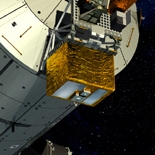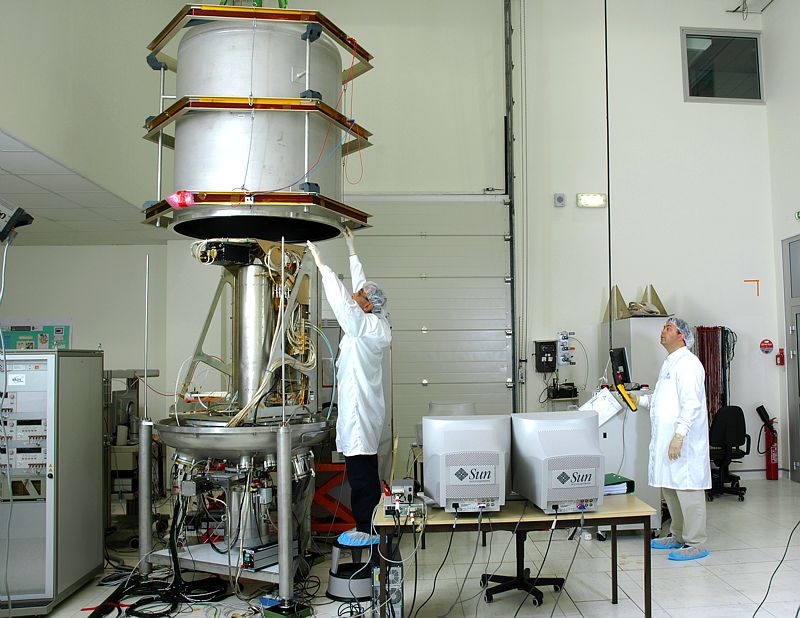A long-haul project

PHARAO* is certainly setting its sights high, as one of its objectives is to test Einstein’s famous theory of relativity postulated at the start of the 20th century.
CNES’s atomic clock is a large cube 1 metre on each side that will fly in 2013 to the International Space Station (ISS), where it will be mounted outside the European Columbus laboratory for 18 months.
“Since the theory of relativity was postulated a century ago, time has become elastic,” explains Sylvie Léon-Hirtz, PHARAO Project Manager at CNES. “Time and space are interwoven in a space-time fabric warped by gravitation. According to Einstein’s theory, the intensity of the gravitational field affects the flow of time. This means a clock in motion will be ‘slower’ than a clock that is stationary. In this sense, we say that time is subjected to relativistic effects like gravitational redshift or expansion.”
Putting relativity to the test

All these predicted effects can be tested experimentally and that is what the uniquely precise PHARAO clock is designed to do.
“Such tests have already been performed from a drop tower and on aircraft or sounding rockets,” says Sylvie Léon-Hirtz. “But on the ISS, at an altitude of 400 km and in microgravity, we’ll gain several orders of magnitude in precision.”
PHARAO is also the 1st cold-atom space clock. “We’re going to have to validate and calibrate it for 6 months,” concludes Sylvie Léon-Hirtz. “Demonstrating these new technologies will be useful for many other instruments, especially new inertial sensors.”
*Projet d'Horloge Atomique par Refroidissement d'Atome en Orbite.
